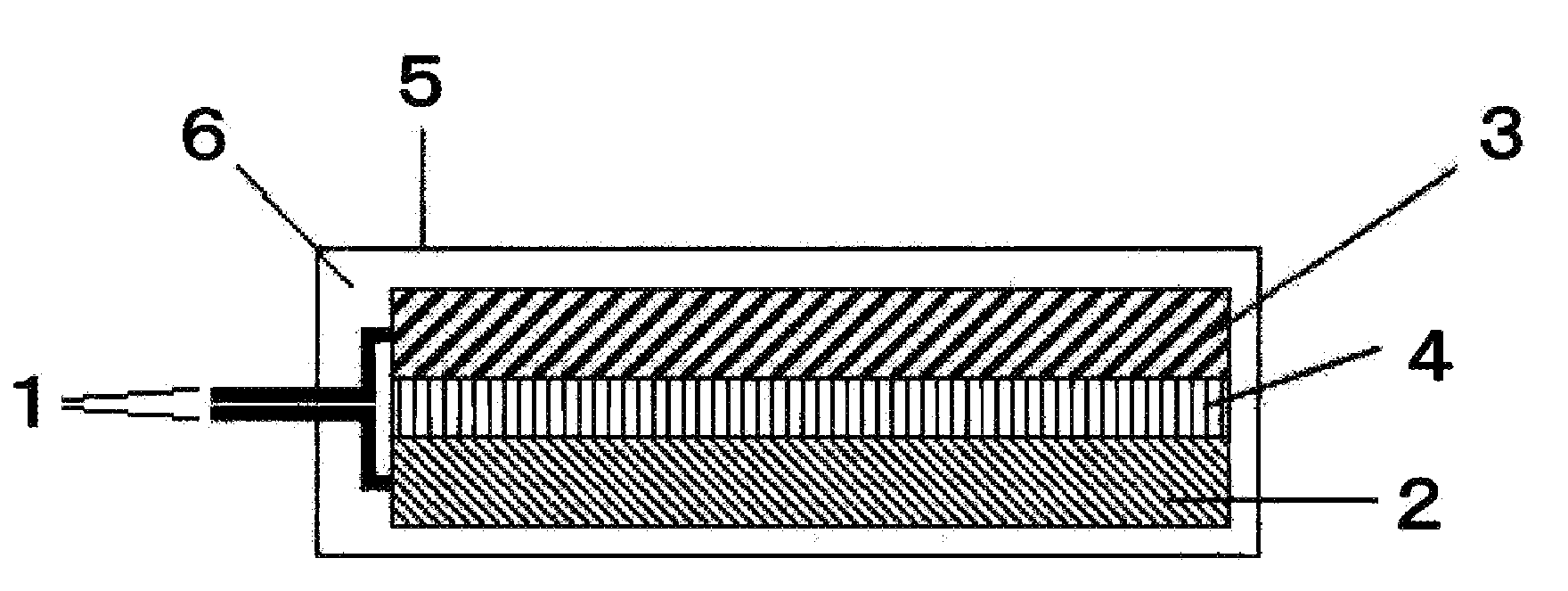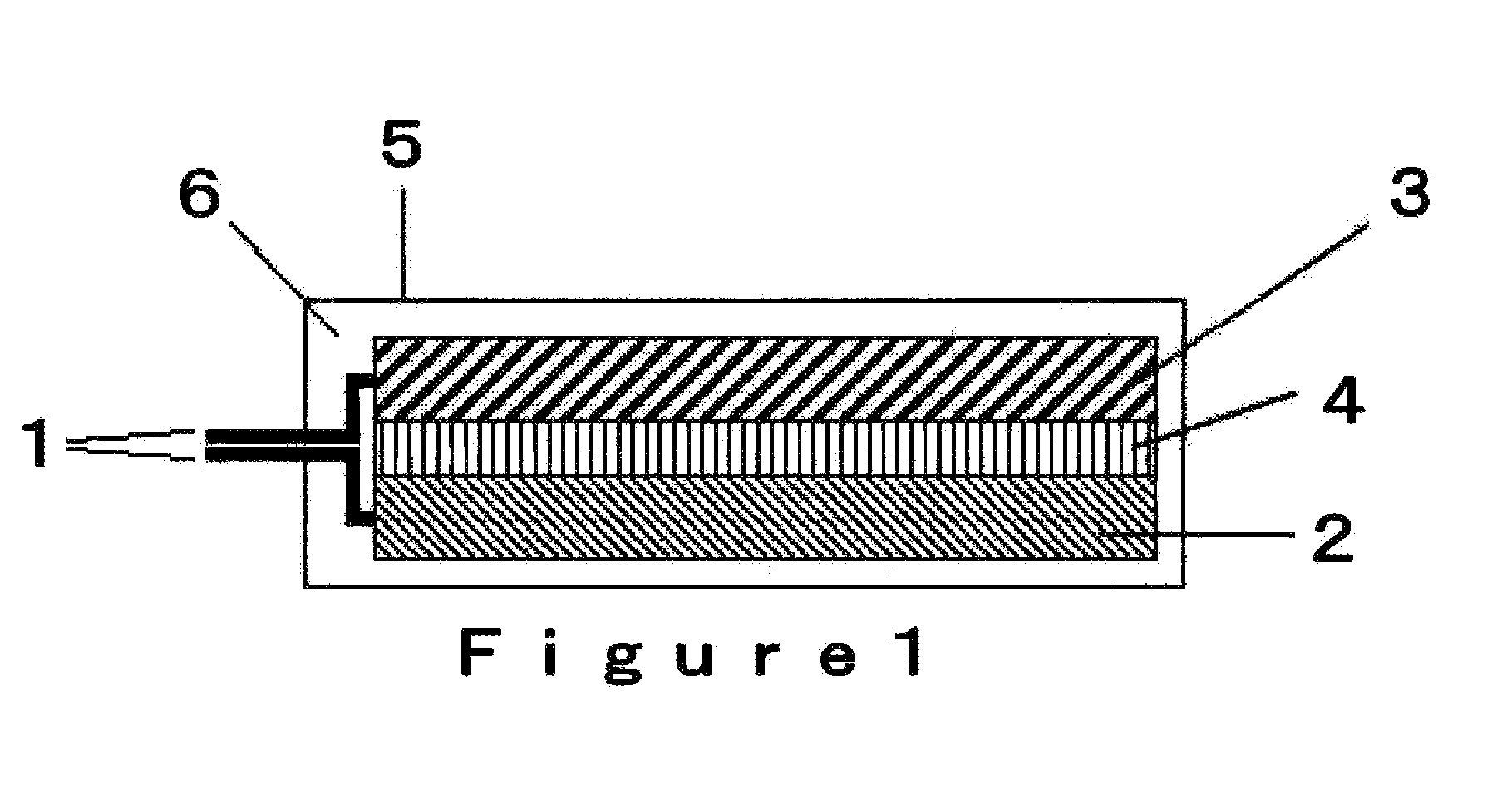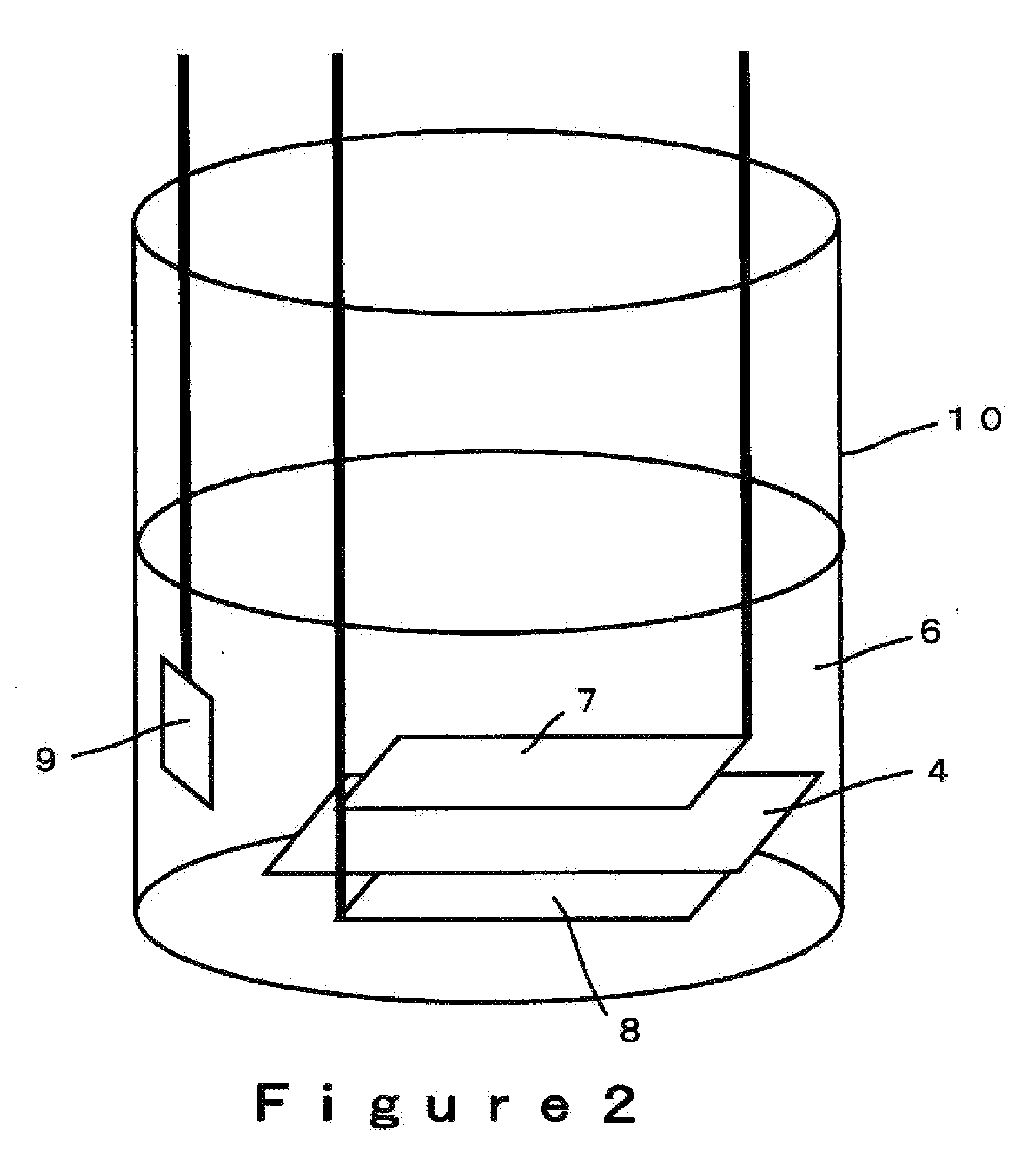Method of detecting condition of secondary battery
a secondary battery and condition detection technology, applied in the field of methods of detecting the condition of secondary batteries, can solve the problems of inability to accurately detect the deterioration of batteries, the battery is exhausted, and the mobile device becomes unusable faster, so as to achieve the effect of more accurate detection
- Summary
- Abstract
- Description
- Claims
- Application Information
AI Technical Summary
Benefits of technology
Problems solved by technology
Method used
Image
Examples
example 1
Preparation of Laminate Cell
[0038]Lithium cobalt oxide as a positive electrode active material, carbon as a conductive agent, and polyvinylidene fluoride as a binder agent were mixed together in amounts of 95 parts by weight, 2.5 parts by weight, and 2.5 parts by weight, respectively, with respect to the total weight of the positive electrode active material, the conductive agent, and the binder agent. N-methyl-2-pyrrolidone was added to this mixture to form a slurry. The resultant slurry was applied onto both sides of a current collector made of an aluminum foil, and then dried. The resultant electrode was calendered and cut out into a plate shape, and a tab 1 was attached thereto. Thus, a positive electrode 2 was prepared.
[0039]Graphite as a negative electrode active material, carboxymethylcellulose as a thickening agent, and styrene-butadiene rubber as a binder agent were mixed together in amounts of 98 parts by weight, 1 part by weight, and 1 part by weight, respectively, with r...
example 2
[0046]The entropy changes with respect to the lithium amount x were plotted (FIG. 6) in the same manner as described in Example 1, except that the following deterioration test was conducted in place of the deterioration test performed in Example 1.
Deterioration Test
[0047]A laminate cell fabricated in the same manner as described in Example 1 was charged at a constant current of 700 mA at room temperature until the voltage reached 4.4 V, and further charged at a constant voltage until the current value reached 35 mA. Thereafter, the cell was stored in a thermostatic chamber at 60° C. for 20 days.
example 3
[0048]The entropy changes with respect to the lithium amount x were plotted (FIG. 7) in the same manner as described in Example 1, except that the deterioration test performed in Example 1 was not conducted.
PUM
 Login to View More
Login to View More Abstract
Description
Claims
Application Information
 Login to View More
Login to View More - R&D
- Intellectual Property
- Life Sciences
- Materials
- Tech Scout
- Unparalleled Data Quality
- Higher Quality Content
- 60% Fewer Hallucinations
Browse by: Latest US Patents, China's latest patents, Technical Efficacy Thesaurus, Application Domain, Technology Topic, Popular Technical Reports.
© 2025 PatSnap. All rights reserved.Legal|Privacy policy|Modern Slavery Act Transparency Statement|Sitemap|About US| Contact US: help@patsnap.com



